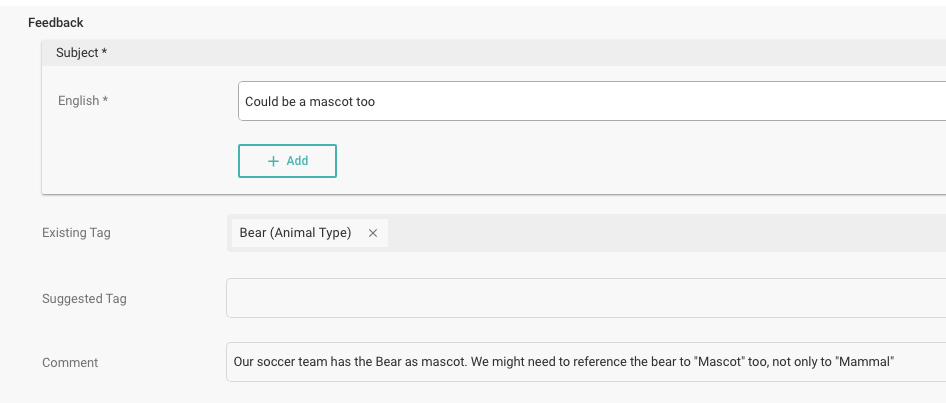By Matthew Jones • Dec 10, 2018
In a recent blog, we covered how it was possible to create a basic taxonomy structure completely from scratch, using AI. Continuing on the same subject, we’re going to cover a key aspect of change management: why once you have a working taxonomy, it is only the beginning of a process, not the end.
Taxonomies directly reflect our organisations, our products or our services. Over time, these adapt and change: which is why the maintenance of a taxonomy is vital. In this blog, we’ll cover why it’s important to keep a taxonomy up-to-date and some methods of how to do so effectively.
Why is Taxonomy Change Management Important?
After working with many different taxonomies, organisations and users for over two decades – the importance of keeping a taxonomy updated has become particularly apparent to us. There are two clear reasons for doing so:
Firstly, one thing is always clear above all else: change always occurs. Our clients have taught us that change can happen at different speeds to different organisations and thus the rate of change management should be handled with a tailored, rather than blanket, approach. However, change will always happen. As a taxonomy forms the information infrastructure right at the heart of a content management system, it should always be relevant, recognising that change will always occur.
As a taxonomy forms the information infrastructure right at the heart of a content management system, it should always be relevant, recognising that change will always occur.
Secondly, an up-to-date taxonomy should also be trimmed and purged so that it is nimble. Over time, product lines, projects and services are replaced, this can lead whole areas of taxonomies becoming redundant. It is always desirable to keep a taxonomy free from outdated information, so that it is lean and responsive for today’s users of a content management system.
Change: The Only Constant Thing in Life
When it comes to addressing the first point, you do not need to look far to find examples of major changes that have happened to organisations. Take for example the cosmetics company Avon, known for having over six million cosmetics representatives spread across over 100 countries. Though initially, the company was started by a man selling used books door-to-door.
However, it is not only companies that have drastically changed that must implement proper change management. One must remember that almost all organisations are constantly changing their offerings, a common example of which would be the introduction of new products or services.

Take the recent examples of new product areas that used to be very niche or didn’t even exist. Internet connected appliances and vehicles, also known as the Internet of Things (IoT) are increasingly being used around the globe. Yet in a whitepaper by Cisco, it was suggested that the sector was only really ‘born’ around 2008 or 2009. Even if new products categories are not adopted, it is important to take into consideration that many organisations adapt or alter their offerings – with only incremental updates.
The opposite effect is also true, whilst new product and services arrive; old ones become redundant. Take for example, portable sat-nav devices and audio-players, both disregarded with the introduction of the smartphone.
Accounting for Linguistic Shifts
Not only do products need to be added or removed but the vocabulary we use for them and other areas change too. This again needs to be thought of in content management terms – specifically taxonomy maintenance. After all, language itself is in a state of constant flux, as covered in this interesting blog from our customer Pearson.
An example of a product related language change in recent years would be the mobile phone – once referred to as such or perhaps as a ‘cell phone’ in American markets. Nowadays, smartphones are commonly referred to only as a ‘phone’ – demonstrating the ubiquity of these devices, their level of integration into everyday life and the demise of the landline phone.
It is also important to remember that changes do not only happen externally to an organisation. Changes also occur internally: new management members join and others leave, regulations change, departments are reorganised and new business lines are added. In terms of taxonomy data, this means a change in names, positions and other information – all of which must be updated to ensure a good level of accuracy.
Three Simple Steps to Keep your Taxonomy Updated
We’ll now go on to cover three different techniques that you can employ in order to keep your taxonomy up-to-date and nimble. They are not in any particular order in terms of implementation, so feel free to to employ them in whichever order you see fit. All methods described below can be used independently but using them in combination will usually produce the best results.
1. Auto-tag your Taxonomy
The first method we’ll cover uses AI powdered auto-tagging technologies to keep a taxonomy updated. We’ve recently covered AI and the potential it has when it comes to DAM and other content management system taxonomies. Both the AI taxonomy building guide mentioned earlier and our comprehensive blog about the possibilities and drawbacks of auto-tagging cover the subject.

If you have a good amount of visual content listed in your taxonomy, then you have the perfect base for updating it using auto-tagging. All you need to do here is run your visual content through an auto-tagging provider. Certain types of content, like stock images, may never need to be reviewed by humans – read our past blog for more on this.
In terms of which auto-tagging tools to use for this purpose, we have a built-in Clarifai integration in Picturepark, though it is possible to use a variety of sources – see our AI taxonomy creation guide for more details on how to choose an option and the benefits of each. After you’ve utilised your chosen method, collect your findings in a spreadsheet and then run them through a keyword density tool like Textalyser to find the most common terms. These will then form the new data to add to a DAM or content management taxonomy.
Even if you have previously run all your content through auto-tagging providers, this method continues to be useful as there is also another way to use the power of auto-tagging to give greater taxonomic depth. It is possible to re-run content through auto-tagging tools. To understand why this is good behaviour when it comes to taxonomy maintenance, remember that the AI behind auto-tagging is always being updated and improved. Providers seek to give their auto-tagging platforms the ability to produce better semantic results – that have a greater granular depth and level of precision.
In addition to this, auto-tagging providers often seek to widen their audience by introducing new languages or regional terms. This can play to your benefit, especially if you have a multilingual audience. It provides you with the potential to add to a pre-existing taxonomy in another language or even create one from scratch. For example – your South American distributors might benefit a lot by including Spanish.
2. Taxonomy Crowdsourcing: Your Users are your Experts
Another great resource for taxonomy maintenance is one that is sometimes overlooked, instead of looking outwards to external sources, it can be a major benefit to look inwards: at your own user base.
To value the true worth of this knowledge, it is important to remember that daily users of a content management system can be experts in their own way. After all, it is they that know how clients or partners search, which content is not accurately tagged and will likely have noticed inconsistencies in your taxonomy. They provide a much needed ‘human touch’ to auto-tagging. They are the ones that notice if a corporate headshot is tagged with the wrong name or if the product title is wrong on an image. They are on the ‘front line’ when it comes to your content management system.

To take full advantage of this source of knowledge, we recommend that first – it is important to ‘win hearts and minds’ of your users. Here you must sell the benefits of taxonomy upkeep and why this will benefit them; faster search results and a better structure, are two of the key advantages.
Once this has been established, it is important to implement an efficient workflow to gather information. Users will want to access the content they need quickly, and not spend time working on a taxonomy, so they will require an efficient and simple solution.
It would be ideal to designate a specific contact – as an assigned party that will deal with the input of user information. This could be you or someone else at your organisation that is familiar with taxonomies. Once fixed a methodological workflow would follow a pattern like this:
- Create a ‘reporting’ system whereby users can send in information to the assigned party – this could be done via email, forms or as outlined in the below screenshot, an established feedback flow could be created using a content management platform.
- Users will send in their suggestions.
- The assigned party will the decide if the suggestions are relevant and if they are, changes will be made to the taxonomy.
- Feedback will then be provided to the submitter(s), which will encourage them in the future.
3. Get a Professional Taxonomist’s Review
Whilst the two aforementioned methods are a great way to keep your taxonomy up-to-date and come at almost no cost – going to a professional taxonomist is a surefire way to ensure that your taxonomy is in order and that you can keep on top of change management.
After all, they are experts in the field and will be able to not only make changes but also give guidance in terms of structuring for the future. To find a suitable taxonomist, we would recommend going to the DAM Guru Program website, where you will be able to connect with a variety of taxonomists.
A Journey, Not a Destination
In conclusion, what we are conveying here is that a taxonomy is a project that is never finished. It is a ongoing journey, rather than a destination. It is living, breathing data that always needs to be updated and adapted over time.
It is living, breathing data that always needs to be updated and adapted over time.
A taxonomy should be updated on a semi-regular basis, though there is no correct figure for this – it will depend on the size of your content library, usage figures and other variables. You can work it out using different metrics – perhaps annually or every time a specified amount of content is uploaded or modified.



